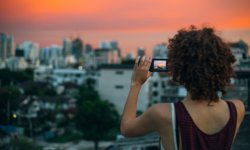@IamSam In the
2nd post of this thread, all the pics were against a very bright sun in the background coupled WITH the absence of a secondary light on the subject, leaving a bright yellow halo around a subject deluged in shadows. The
3rd post of this thread shows a lady with sun almost at 11-12 O'clock time AND lack of secondary source of lighting on the subject.
When I posted this picture, I had reasoned that the position of the sun has corresponding shadows in the pic,
1) on the right side of the neck with chin's shadow
2) on the right cheek almost entirely from top to down
3) under the right shade
as can be seen below
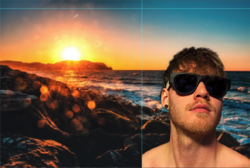
If sun was the only source of light, you can expect the existing shadow to be stronger in the areas mentioned above plus casting itself on the rest of the face, almost making it silhouetted. Given the pic in its frame within the blue marking guide lines, what factor of the photo can deny the presence of a secondary ambient light falling on the face thus removing the light shadows but still allowing the stronger natural shadows formed by the sun as enlisted above to still form? This soft ambient (possibly reflected) light would not produce a flare in the sun glasses - which is the reasoning behind removing the reflection of light source on the left shade as shown from original photo:
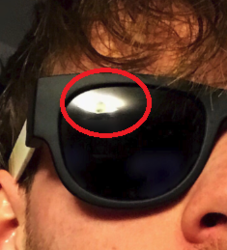
In a beach setting, this secondary light source could have been a street light or a shop light which would be on at that time of the day as it is getting dark. The following image, which was my final submission with all lighting effects illustrates and summarises what I explained above.
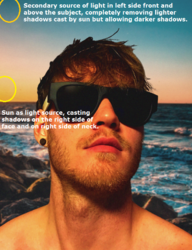
Your inputs would assist me in changing the way I see things for any future designs involving light and shadows.
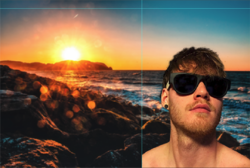


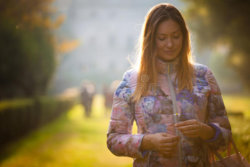
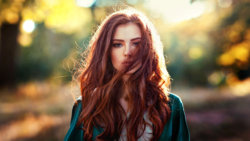
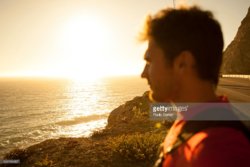
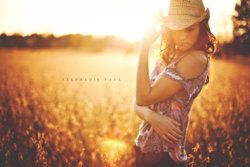
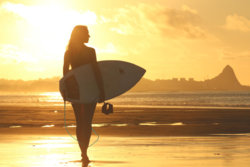


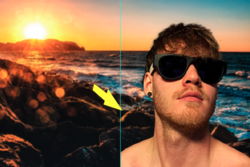
 Light falls in a certain way, that is true. However, I don't think the lighting in this picture was really the issue. It was a great bit of work. I don't think many would have found fault, except for diehard professionals, like us, who are in this field. *^_^* I always find these discussions interesting; old pros splitting hairs over something that the client will probably just discard once the novelty has worn off.
Light falls in a certain way, that is true. However, I don't think the lighting in this picture was really the issue. It was a great bit of work. I don't think many would have found fault, except for diehard professionals, like us, who are in this field. *^_^* I always find these discussions interesting; old pros splitting hairs over something that the client will probably just discard once the novelty has worn off. 



